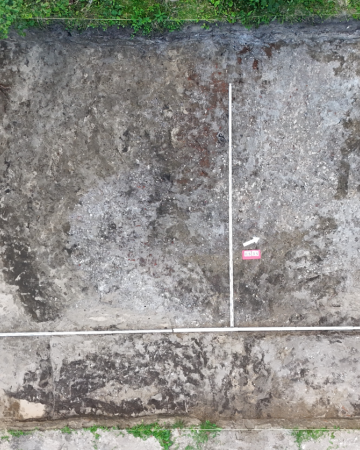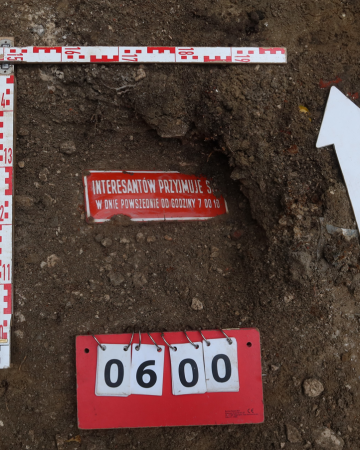Time capsule in a bomb crater, or an unusual archaeological discovery at Westerplatte
The ongoing XI Stage of the archaeological work at Westerplatte has brought the excavation of dig no. 38. It is located at the site of a large crater made by a bomb dropped during the Luftwaffe air raid on 2 September 1939.
The German 58 Junkers Ju-87B Stuka planes and three Heinkel He-111Es bombed the peninsula, dropping a total of 258 fragmentation and incendiary bombs, weighing a total of 26.5 tonnes. The crater, almost 11 metres in diameter and of a total depth of up to 3 metres, was formed when a 250 kg bomb exploded.
Following the fighting, the crater – like many other – was used as a rubbish pit. As the Westerplatte area was being cleared after the battle, all items considered unnecessary by the Germans, as well as rubble and other materials from buildings destroyed during the fighting, were dumped in the crater. Thus it became a kind of time capsule which preserved items from the Military Transit Depot’s equipment.
During the archaeological exploration of the crater, the museum archaeologists discovered large quantities of lead seals, uniform buttons and hooks, various tools, glass bottles and inkwells, building equipment (handles, locks, switches and electrical outlets, etc.), and many other artefacts.
Discovered a few days ago, an enamel plate in excellent state of preservation is a unique find. It was most likely fixed to the door of an administrative room in one of the Depot buildings.
Once the necessary conservation is completed, this exceptional artefact will be displayed at the archaeological exhibition currently being arranged at the Westerplatte Museum, scheduled to open next year.
List of illustrations
1. Enamel plate found during the crater’s exploration
2. SC 250 bomb crater during exploration
3. In situ plate in the layers of the crater’s backfill
4. Archival photographs of the crater taken after the battle
5. Documentation work



















